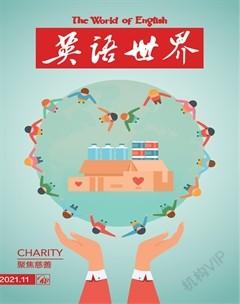How Personal Heritage Shapes Lives遗产塑造人生
杜颐明
By excavating1 the past, three Singaporeans find a deeper connection to their heritage and make it a personal mission to promote it.
A theater practitioner with ancestral2 links to an ancient sea goddess weaves his fascination with history into his plays. A traditional Chinese craft shop owner preserves his grandfathers store as a living museum. A mother and daughter share heirloom3 Indian Muslim recipes of their familys ancestors, through a home-based cooking experience.
What binds them? Its the shared belief that heritage is not just a relic, but something sacred to protect and share.
For theater veteran Jonathan Lim, 45, it started with his familys quest to retrace their forgotten roots.
Jonathans late grandfather was the first of his Teochew clan to leave his village in Chao An in Chinas Guangdong province for Southeast Asia. The family only had his grandmothers lullaby for reference—which cryptically4 referenced a tree, bridge, temple, and black door.
When the Lims finally tracked down their ancestral village in 2005, they discovered an incredible ancestral connection—they were descendants of Lin Mo, a young woman who was believed to have transformed into the Mazu sea goddess deity. Early Chinese immigrants to Singapore would pray to Mazu for safe journeys at sea and later dedicated the Thian Hock Keng Temple to her.
This revelation spurred Jonathan to weave his extraordinary tale into his book Between Gods and Ghosts. For the younger generation of English readers, he wanted to show how ghosts and gods are inexplicably5 linked and a “messy, interconnected part of our culture.”
Today, he gathers historical tidbits6 wherever he goes—from legends about Mazu to interesting religious rituals he observes at temples, which he stows away as material for future plays.
While writing the Four Horse Road play staged in March and April 2020, Jonathan explored 160 years of lesser-known histories around Waterloo Street, one of Singapores oldest streets.
He was intrigued by the areas deeply intertwined multiculturalism and multi-religiosity.
For instance, he discovered a small altar dedicated to Guan Yin (the Goddess of Mercy) within the Sri Krishnan Temple, just next to the Kwan Im Thong Hood Cho Temple. It inspired Jonathan to create a story about the encounter between a mainland Chinese concierge7 and a local Indian volunteer both burning kim zua (paper offerings) in the back alley.
“Everyone will go on a journey of discovery of some sort when they start asking questions,” he says. “Things from the past still enrich the present in very intangible8 ways.”
Growing up in his grandfathers shop, Jeffrey Eng recalls the wonder he felt in this massive “playground” filled with drums, gongs, erhus9, elaborate opera props, costumes and martial10 arts weapons.
In 1937, his grandfather Eng Tiang Huat set up a tailors on Merchant Road, which he named after himself. A well-respected figure in the community, he was an active committee member in several clan associations who many Teochew people sought help from.
Now located in a two-storey conserved shophouse in Geylang, the shop remains an important Chinese cultural hub and supplier to various temples, clan associations and opera troupes in Singapore.
With the shop, Jeffrey, 60, says that many visitors have a renewed interest to learn more about the Chinese clans and associations and visit other religious institutions in the nearby vicinity.
Thanks to Facebook, he now gets enquiries from New York to Japan about old, hard-to-find items they can buy from his shop or are keen to learn more on Chinese culture and heritage.
Content to spend entire afternoons regaling his tales, Jeffrey says, “I hope my shop can be an entry to educate those who wish to know about our rich traditional cultural heritage and roots.”
Through preparing dishes like mee siam biryani and varuthamavu roti, their kitchen became an entry point for Taahira Ayoob and her mother Zaithoon Ibrahim to share Indian Muslim food, culture and history.
They started Spice Zi Kitchen in 2019, after being inspired by experiencing the warm hospitality enjoyed over home-cooked meals during a trip to Uganda.
Their ancestors originally hailed from11 a small town called Kadayanallur in South India, and left for Singapore in the 1930s. Zaithoon and her relatives then recreated their recipes with their own local twist, using ingredients like pandan, tofu, tempeh, vermicelli, and lemongrass unique to the Southeast Asian region.
Over the cookery sessions, they also dish out information about festivals celebrated by Indian-Muslims such as Hari Raya Puasa and the origins of Kadayanallur Street in Tanjong Pagar.
Through this experience, it breaks “invisible barriers”, says Zaithoon, 56. They have since stepped up public education efforts, recently speaking in a panel discussion by the Singapore Her-itage Society.
Taahira will launch a new initiative with Singaporean cookbook author Pamelia Chia, called Pass the Pasar. Using Instagram, they educate young people about wet market produce and challenge them to start cooking.
“We are just a small speck in our community, but through Spice Zi Kitchen, its become something bigger than ourselves,” adds Taahira, 28.
Amid Singapores rapid modernization, these three hope to inspire more locals to safeguard their rich heritage—be it through documentation, community engagement or public education.
Rather than seeing heritage as a large block to chip away at, which is too intimidating, give people “intimate and personal reasons to be curious and go deeper,” Jonathan says.
“The way forward is to start finding ways to repackage it as your story, the story of your house, neighbourhood, community,” he says. “Through the story of my celestial12 aunt, history reached out and pulled me in. I want to replicate13 that journey for other people.”
三个新加坡人通过挖掘过去,找到与自身遗产更深入的联系,并把促进这种联系作为个人使命。
一位祖上与古代海中女神颇有渊源的编剧将其对历史的痴迷融入剧本之中;一位传统中国手工艺店主将其祖父的店铺当作活博物馆加以保护;一对母女通过家庭烹饪分享祖传的印度穆斯林食谱。
是什么将他们联系在一起的呢?是共同的信念,即遗产不仅仅是一种遗物,而且是需要保护和分享的神圣之物。
就45岁的资深编剧林浩然而言,这种信念始于家人对被遗忘过往的追寻。
林浩然已故的祖父来自中国广东潮安,是家族中第一个离开村子前往東南亚的潮州人。林家人后来对故乡的记忆只能以林浩然祖母的摇篮曲为参考,摇篮曲中隐晦地提到过一棵树、一座桥、一座庙和一扇黑门。
2005年,林家人终于找到祖籍所在的村庄,并发现一段不可思议的家族渊源——他们是林默的后裔。据传,海神妈祖便是年轻时的林默所变。早期前往新加坡的中国移民都会向妈祖祈福,以保佑海上航行安全,后来他们修建了天福宫,专门用来供奉妈祖。
这一发现促使林浩然将其非凡的家族传说编入其著作《亦神亦鬼》。他想向年轻一代的英文读者展示,鬼魂和神灵其实难分彼此,它们是“我们文化中相互交杂的一部分”。
今天,林浩然无论走到哪里都会收集一些历史珍闻。从妈祖传说到寺庙里观察到的有趣宗教仪式,林浩然都会把它们收藏起来,作为未来剧本创作的素材。
2020年3月和4月,《四马路》在新加坡上演。撰写该剧本时,林浩然探索了新加坡最古老的街道之一滑铁卢街160年鲜为人知的历史。
他对这条街紧密交织在一起的多元文化和多宗教信仰饶有兴趣。
譬如,他在观音堂佛祖庙旁的克里斯南兴都庙内发现了一个供奉观音的小祭坛。这一发现激发他创作了一个故事,讲的是一位中国大陆门房和一位本地印裔志愿者在寺庙后巷里因为烧金纸而偶然相遇。
“人一旦开始问问题,便会开启某种发现之旅。”林浩然说,“过去的事物仍会在无形之中丰富现在的生活。”
从小在祖父店铺里长大的翁泽峰难以忘怀在这个巨大“游乐场”里感受到的惊奇,这里摆满了鼓、锣、二胡、精致的戏曲道具、服装以及武行兵器。
1937年,祖父翁展发在马真街开了一家以自己名字命名的绣庄。祖父是社区中受人尊敬的大人物,是活跃于多个宗族协会的委员,许多潮州人都向他寻求帮助。
如今,翁展发绣庄迁至芽笼一幢两层文物保护店屋内,仍是新加坡重要的华人文化中心以及各寺庙、宗族协会和戏曲团的供应商。
60岁的翁泽峰说,因为这家店,许多游客对进一步了解华人宗族和协会又重新燃起了兴趣,并开始参观附近的其他宗教机构。
由于脸书,翁泽峰现在会收到来自世界各地的网友询问,从纽约到日本。他们或是咨询可以从他的店里买到哪些难寻的旧物品,或是渴望了解更多关于华人文化和遗产的信息。
翁先生愿意花上几个下午的时间讲述他的故事,他说:“我希望我的店铺能够成为一个入口,让那些想要了解我们丰富传统文化遗产和根源的人获得教育。”
通过烹饪暹罗炒米粉和印式飞饼等菜肴,塔希拉·阿尤布和母亲扎伊通·易卜拉欣将其厨房变成分享印度穆斯林美食、文化和历史的一个切入点。
2019年,母女俩创办了“扎妈辣厨”,二人是在乌干达旅行期间受到家常菜热情款待得到的启发。
她们的祖先最初来自印度南部一个名叫卡达耶纳卢尔的小镇,于20世纪30年代来了新加坡。后来,扎伊通和亲戚们用本地食材再现了印度食谱,用的是香兰叶、豆腐、丹贝、粉丝和柠檬草等东南亚一带特有的配料。
烹饪课上,她们不但教授厨艺,还宣讲开斋节等印度穆斯林节庆活动以及位于丹戎巴葛的卡达耶纳卢尔街的起源。
56岁的扎伊通说,这种寓教于厨的方式打破了“无形的障碍”。自此之后,她们更热衷于公共宣讲,最近还在新加坡传统文化协会的小组讨论中发言。
塔希拉还将与新加坡烹饪书作者帕梅莉娅·贾共同发起一项新的倡议,名为“路过市场”。她们利用照片墙来教年轻人认识菜市场的农产品,并激发他们的烹饪热情。
28岁的塔希拉说:“我们只是社区中普通的一分子,但是通过‘扎妈辣厨,我们的影响力扩大了。”
在新加坡快速的现代化进程中,上述几位人士希望激励更多本地人保护其丰富的遗产——无论是通过文字记录、社区参与还是公共宣讲。
林浩然说,与其把遗产看作一个被不断蚕食的大块头,让人望而生畏,不如给人们一些“亲密而个人的理由,让他们产生好奇心,进而愿意对遗产有更加深入的了解”。
“接下来要做的就是寻找方法,把遗产重新包装成你的故事,关于你的房子、邻里和社区的故事。”他说,“通过我的先祖妈祖的故事,历史伸出手来,将我拉了进去。我想为他人重现这段旅程。”
(译者为“《英语世界》杯”翻译大赛获奖者)

